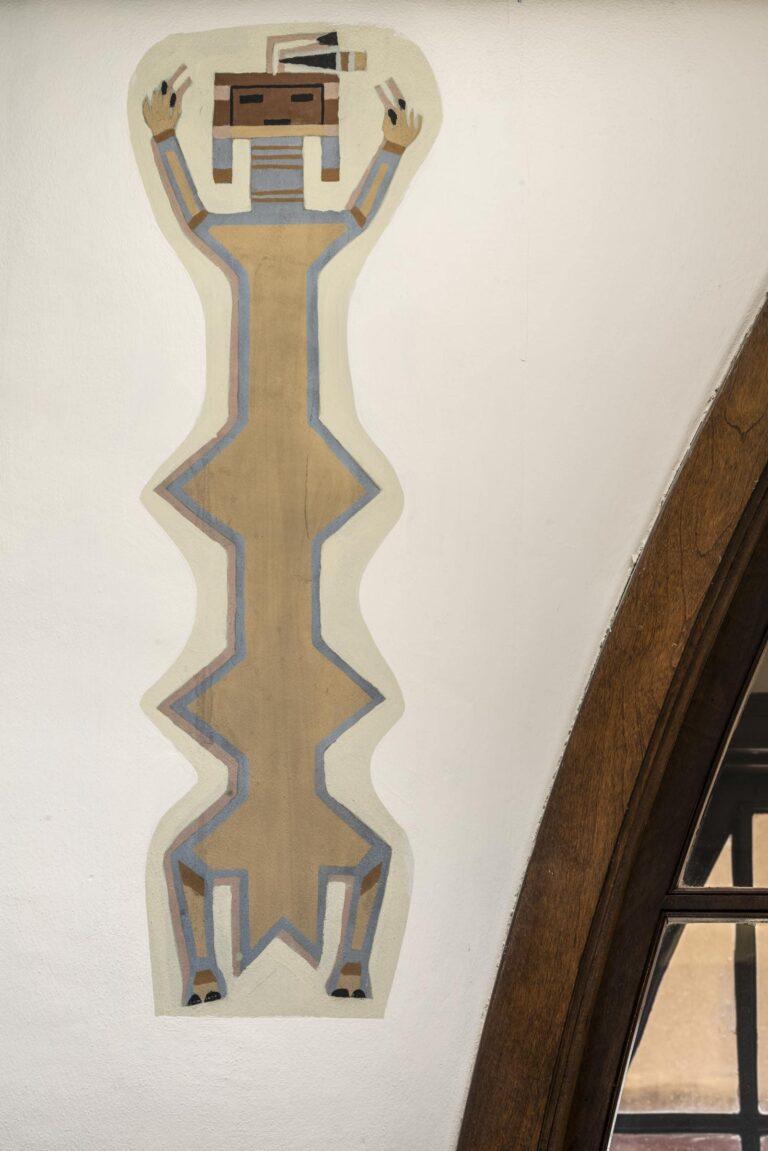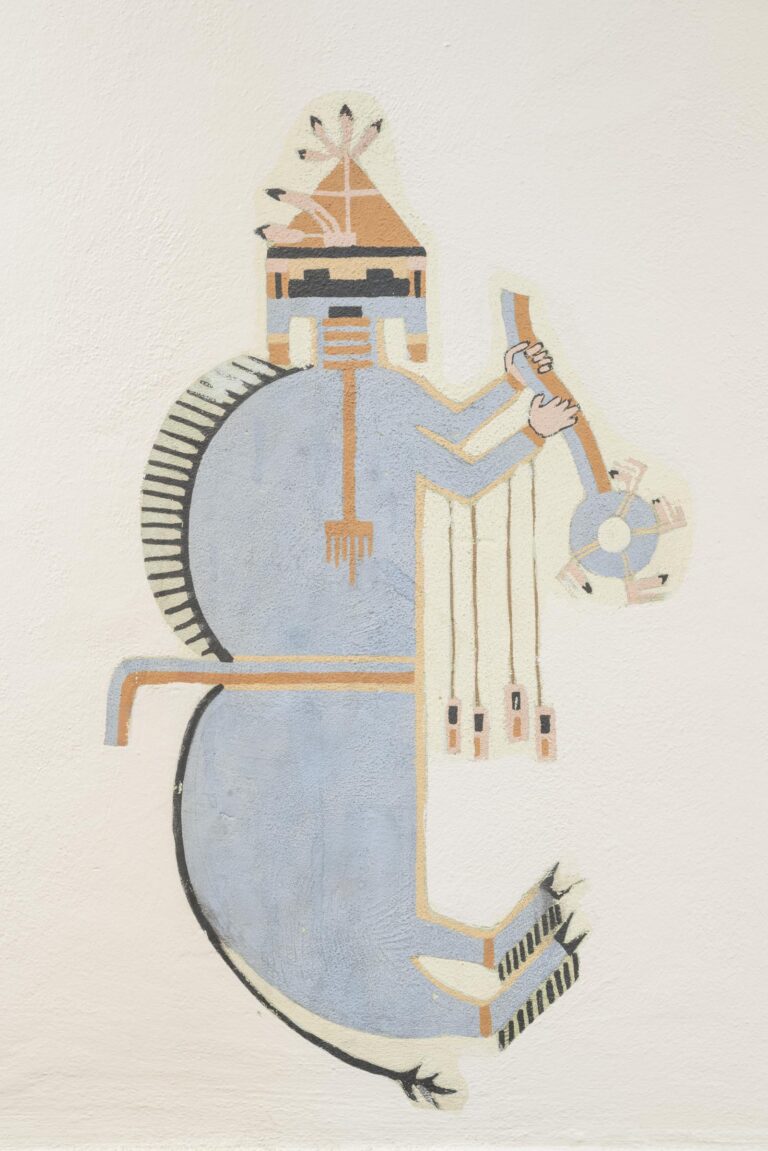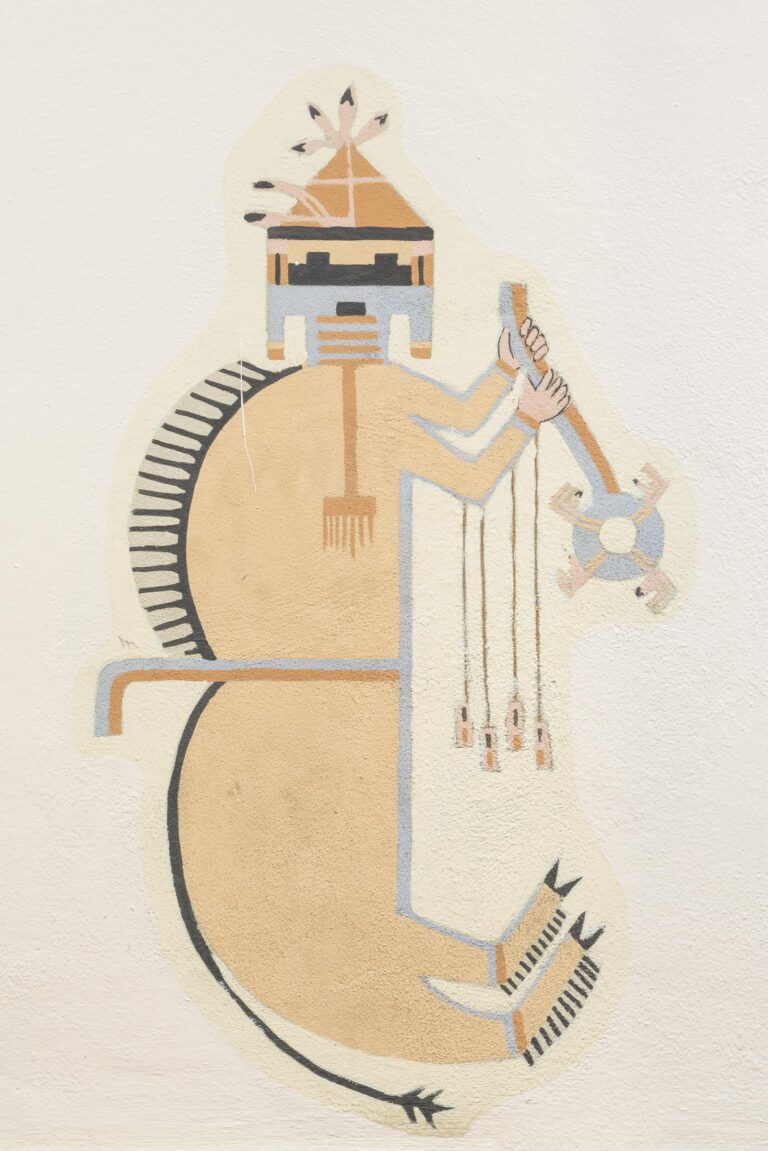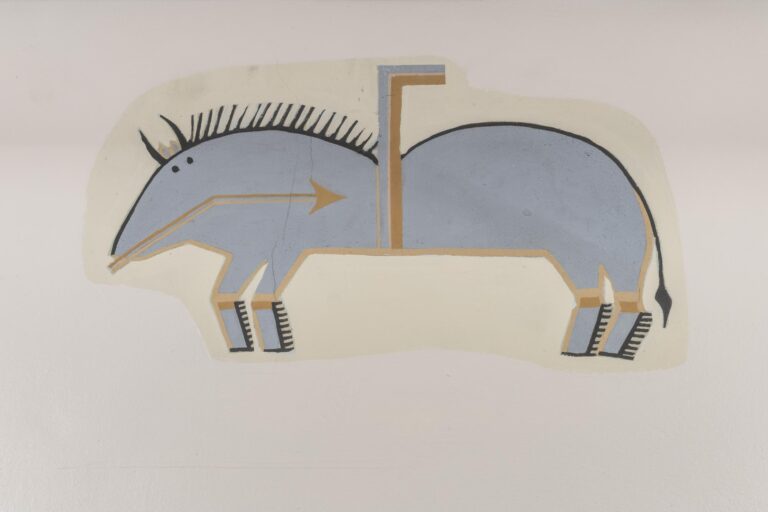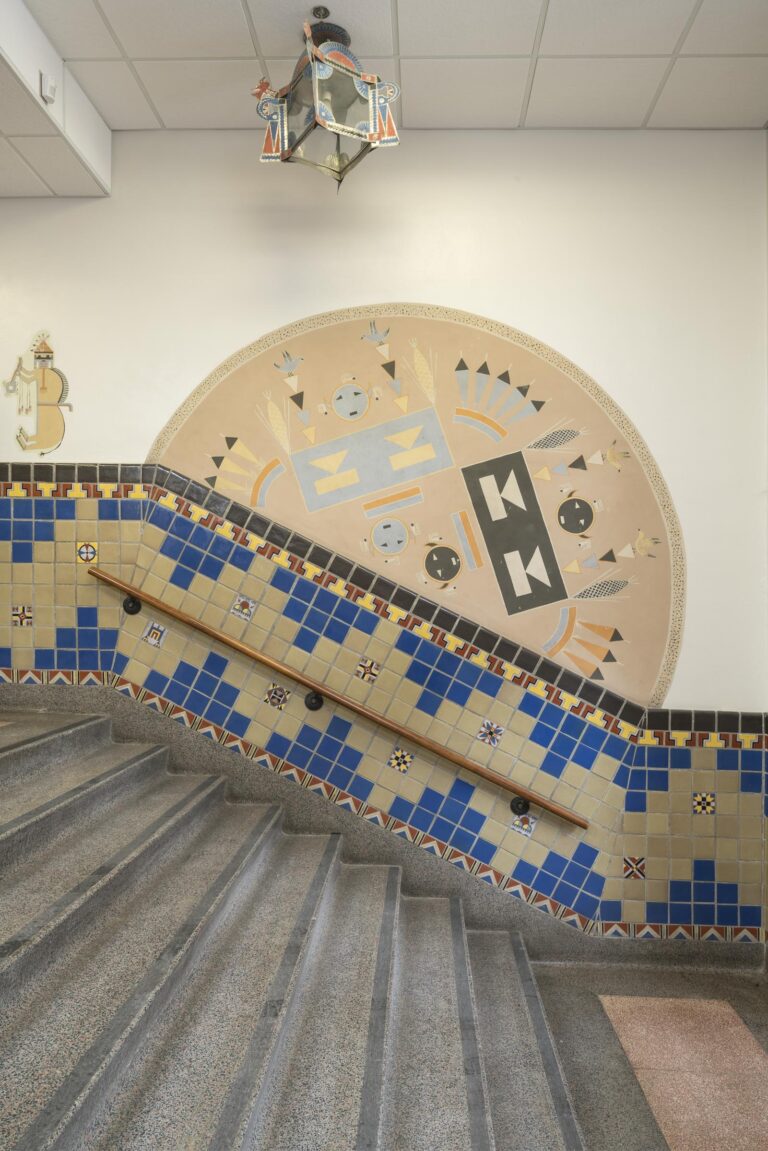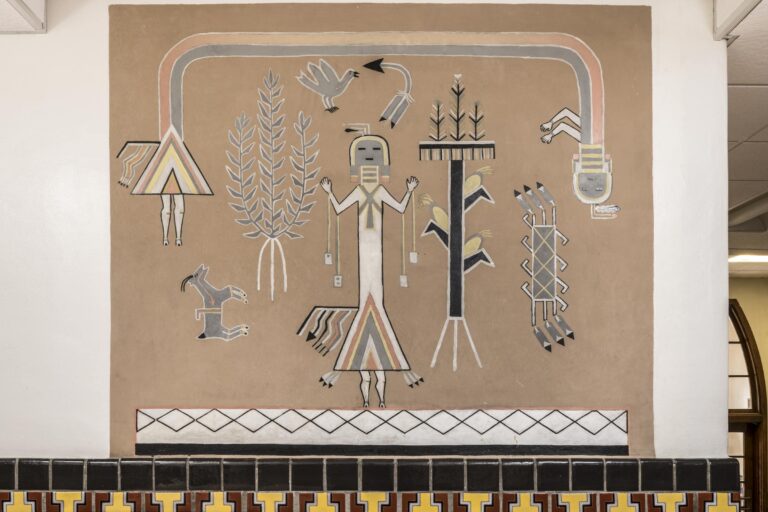The first recorded instance of reproductions of Diné (Navajo) sandpainting designs being used for interior decoration was in the El Navajo Inn in Gallup, NM. The El Navajo was a Harvey House hotel—one of dozens owned and operated by the Fred Harvey Company at major stops along the Santa Fe Railroad. It opened in 1923 and featured first-of-its-kind artwork in the lobby and common areas: twelve sandpainting-style wall paintings copied by Fred Greer, a white artist, from drawings by Sam Day Jr., a Diné artist. This use of sandpainting designs was highly controversial as sandpainting was traditionally a deeply sacred, private, and protected ceremonial practice. To quell the outcry from the Diné community, the Harvey Company arranged for the hotel’s opening to include a ceremony performed by a reported twenty-nine “medicine men.”1
Less than two decades later, the sandpainting-style wall painting concept was repeated in Gallup’s 1938 New Deal McKinley County Courthouse, when, according to a contemporary report, “state art directors . . . made provision for the selection of a young Navajo artist to aid with the murals for the new McKinley county [sic] courthouse.”2 The artist painted a total of sixteen sandpainting-style wall paintings throughout the building’s first floor, and, in fact, the one seen here is a nearly exact replica of one installed at the El Navajo Inn3 (which was demolished in 1957). Perhaps because these murals are seen as “decorative” or “reproductions” of traditional/cultural designs, the artist was never credited by name (the story of the three sets of painted-over initials seen along the bottom of the painting has been lost; they are presumed to be additions made and then “erased” long after the fact and their relevance and meaning is, at this point, undetermined).


